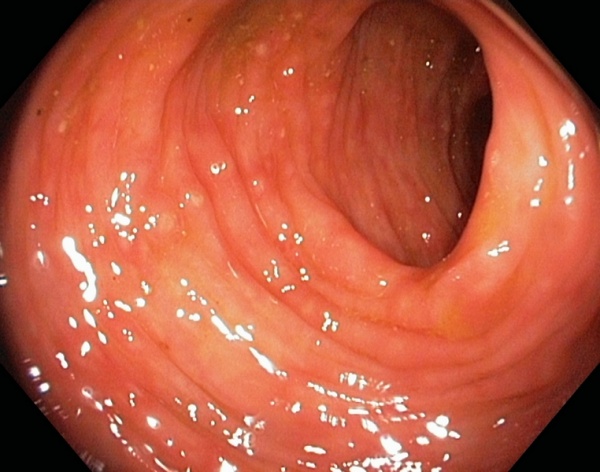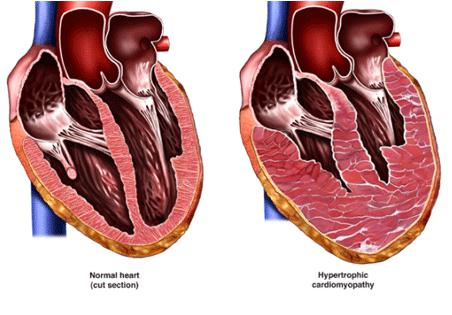How to treat pulmonary tuberculosis at home: tips
Tuberculosis is a dangerous infectious disease. The disease not only has a strong effect on the body, causing serious conditions, but can result in the death of the affected person. And since a certain type of pathogenic microorganisms (microbacteria) causes the disease, there is a huge possibility of spreading the infection among people around the sick person with tuberculosis. Main question: ?
The word "tuberculosis" itself comes from the Latin tuberculum (tubercle). Tubercles (granulomas) are a form of tuberculous focus of inflammation. If the granulomas do not heal, this leads to the formation of cavities filled with blood - caverns. At the same time, bacteria with a blood stream are carried throughout the body, more and more new foci of inflammation appear. Without medical attention, the disease is fatal.
Disease Definition
Tuberculosis affects various human organs and systems. Modern medicine has 74 types of microorganisms that cause pathological processes that destroy the nervous or lymphatic system, genitals, intestines, kidneys and urinary tract, and sometimes the entire body. However, the most common type of disease is pulmonary tuberculosis. This form of the disease occurs in 90% of cases.
The onset of the disease is characterized by rather “inexpressive” symptoms: drowsiness, “weakness”, a depressed or excitable state of the nervous system, slight chills or sweating. Body temperature rises slightly (up to 37.5 degrees). appears. Signs of the initial stage of the disease are not necessarily observed simultaneously. Then, as the pathological process develops, the symptoms of the disease begin to vary depending on which organs are affected by inflammation.
In addition to the division into pulmonary and extrapulmonary forms of tuberculosis, there are other important characteristics of the disease.
Depending on whether a person fell ill for the first time, or whether his ailment intensified after a period of remission, medicine distinguishes primary and secondary types of tuberculosis:
- Primary tuberculosis is an acute condition that occurs immediately after the pathogen of the inflammatory process enters the body, under the condition of reduced immunity. The symptoms in this case are pronounced, but the patient is not a source of infection for others;
- Secondary tuberculosis is diagnosed in case of exacerbation of an already existing disease. Sometimes a person who has recovered from TB can become infected with another type of microbacteria that causes the illness. The secondary form of the disease is a great danger, both for the patient and for the environment of the sick person. A person must be immediately placed in a hospital, long-term treatment (up to six months) should be carried out, and his condition should be monitored over the next two years.

Also an important characteristic of the disease are data on closed or open form of tuberculosis. An open form is a disease in which infectious agents are found in the secretions of a sick person (sputum, urine, feces, etc.). The form of tuberculosis of the respiratory organs is also called open, if the lesion in the lungs or bronchi communicates with the external environment. This condition of the patient poses a great epidemiological danger. With a closed form, patients are of little danger to the environment.
However, it is quite possible to become infected with tuberculosis even without contact with the patient. Statistics show that about a third of the inhabitants of the Earth are infected with microbacteria that cause the disease. The causative agents of the disease can exist both in the air and in the soil or in the water. Bacteria can stay outside a living organism for a long time. But they do not tolerate sunlight well, so damp and dark buildings are the most dangerous in terms of infection.
It is worth knowing that the entry of microorganisms into the human body does not mean a disease. The occurrence of disease processes or their absence directly depend on the human immunity.
Treatment with folk remedies
The question of the possibility of treating a patient with tuberculosis at home must be considered responsibly and diversified. First of all, you need to understand:
- Is the patient dangerous to his environment. An open form of tuberculosis is a real possibility of infection for many who are close to him. More dangerous to others.
- What is the general condition of the body of a sick person. People who are weakened or emaciated, the elderly or children will not be able to overcome the disease without active and multifaceted medical care.
- The patient has a primary or secondary form of the disease. If the disease recurs, a person is more likely to infect others. In addition, this condition very rarely (in one case out of a hundred) passes without intensive and prolonged medical intervention.
- As far as possible to provide high-quality, and most importantly, continuous and comprehensive treatment of the patient at home. How accessible and regular examinations and monitoring of the course of treatment can be.
Tuberculosis is a serious and dangerous disease. Treatment of the disease does not always occur in a hospital setting. Can be used in particularly severe cases. However, "" should not mean: use only folk remedies, do not visit tuberculosis specialists, do not monitor the course of the disease with the help of examinations.
It is possible to treat some forms of tuberculosis at home. But the decision on how to deal with the disease should be made taking into account the opinion of the doctor.
 In most cases, an attempt to ignore the achievements of modern medicine leads to the fact that the disease either becomes chronic or ends in the death of a person. Of course, even before the invention of effective drugs, there were cases of getting rid of the disease. Tuberculosis is a disease that was referred to in ancient Greece as "phtisis", which means "wasting". From this term came the name of the modern medical specialty - phthisiatrician.
In most cases, an attempt to ignore the achievements of modern medicine leads to the fact that the disease either becomes chronic or ends in the death of a person. Of course, even before the invention of effective drugs, there were cases of getting rid of the disease. Tuberculosis is a disease that was referred to in ancient Greece as "phtisis", which means "wasting". From this term came the name of the modern medical specialty - phthisiatrician.
The long history of the problem means a significant number of attempts to treat tuberculosis with the methods available in ancient times. But it is important to remember: only after the invention of modern drugs and techniques, tuberculosis began to lose ground. Until the early 20th century, "consumption" was considered almost a death sentence. This explains the serious concern of doctors about trying to treat the disease with "proven old methods." As with any dangerous health problem, a doctor cannot guarantee a 100% cure for tuberculosis. However, a modern comprehensive treatment program makes it possible to detect the disease at an early stage and cure it.
Folk remedies can also help and help restore the body's defenses, speeding up the healing process. However, their use does not replace the medicinal methods prescribed by the doctor. The use of various "non-medical" drugs should be agreed with the specialist involved in the treatment of the patient.
Traditional medicines, such as koumiss, propolis, medicinal herbs, do not kill the microbacteria that cause the disease, and therefore are not a complete treatment.
Inhalations
Treatment of pulmonary or bronchial tuberculosis by inhalation methods is possible only up to a certain stage in the development of the disease. Before you start using medications, you should consult your doctor. Essential oils of plants that activate the immune system can be used as inhalations. A few drops of oil are placed on a cloth and several times a day they breathe juniper, fir or thyme oil.
Garlic is used as an antimicrobial agent. The vegetable needs to be mashed, poured with water and heated for about 20 minutes. Having cooled the broth a little, breathe over the steam for 15 minutes.
Decoctions, teas
In the initial form of the disease, traditional medicine recommends drinking herbal decoctions. The composition of the decoction includes the following plants:

- Herbs of oregano;
- thyme;
- Lungwort leaves;
- Peppermint leaves;
- St. John's wort flowers;
- Flowers of mullein sceptre;
- Fruits of Japanese Sophora;
- plantain leaves;
- Licorice root naked;
- Marshmallow root;
- Elecampane root;
- Root of medicinal angelica.
The preparation of medicinal decoctions for such a serious disease as tuberculosis requires attention and responsibility. The proportions required for the decoction: for 250 ml of water, one tablespoon (tablespoon) of finely chopped and thoroughly mixed herbs. Raw materials are poured with boiling water, and infused for two hours.
For the treatment of severe forms of the disease, traditional medicine uses poisonous plants, for example, hemlock. You should not experiment with their use on your own.
Essential oils
The main function of using essential oils in the treatment of tuberculosis is to activate the body's defenses. For these purposes, juniper or thyme oil is recommended.
Oil (in the absence of allergic reactions) is taken one drop twice a day, after meals, dissolving in milk.
Ointments
As the basis for the ointment used for skin tuberculosis, traditional medicine recommends propolis. It is crushed and added to the oil base, for example, to melted butter. The resulting mixture must be filtered, cooled. Store in a closed container in the refrigerator.
Alternative methods of treatment only seem to be absolutely safe. It must be remembered that many plants and substances recommended by healers cause allergic reactions. It is especially important to remember this when herbal preparations are used for treatment. You need to make sure that each component of the medicine is safe. Preparations created according to folk recipes require accuracy and attention. It is best to consult with a knowledgeable herbalist, who will give detailed instructions not only about the recipe, but also about the manufacturing technology of the remedy.
It is not allowed to manufacture a large amount of the drug "for the future".
It is worth making sure that medical and "folk" medicines are compatible.
Video
findings
Tuberculosis is a real danger to human health and life. The best prevention of the disease is regular examinations, strengthening of immunity and vaccination. If the disease is still overtaken, then a visit to the doctor is a necessity. The question of the possibility of treatment at home is decided after the preliminary establishment of an accurate diagnosis, discussion of all related circumstances. Even if there is no need to place the patient in a hospital, this does not mean the use of only alternative methods of treatment. A person with tuberculosis can stay at home only if there is complete epidemiological safety for others.
- Intercostal neuralgia - what is it and how to treat
- How to quickly get rid of dry corns on the legs
- How to treat left ventricular hypertrophy
- Rating of the best drugs for rotavirus for children
- Making tea from currant leaves, the benefits and harms of the drink
- How to drink hydrogen peroxide according to Neumyvakin - an oral regimen
- Features of the treatment of plantar fasciitis with folk remedies
- The composition and beneficial properties of parsley root
- How to get pregnant quickly? Folk remedies
- Herbs-ants in the "pot-bellied" period or the use of herbal medicine during pregnancy
- Why does a sore throat and dry cough occur, and what treatment is required?
- In what year did Zhirinovsky first run for office
- Who is a pedant? What is pedantry? Pedantry equals scrupulousness? Positive traits of a pedant
- Meaning of esthete Examples of using esthete in context
- what is haiku what is haiku
- Lily is a Tatar name. What does the name lily mean. Short and diminutive address
- Golden, red and black bananas
- Rule for adding square roots
- What is a can of Coca Cola made of?
- What should you remember before cloning yourself?









